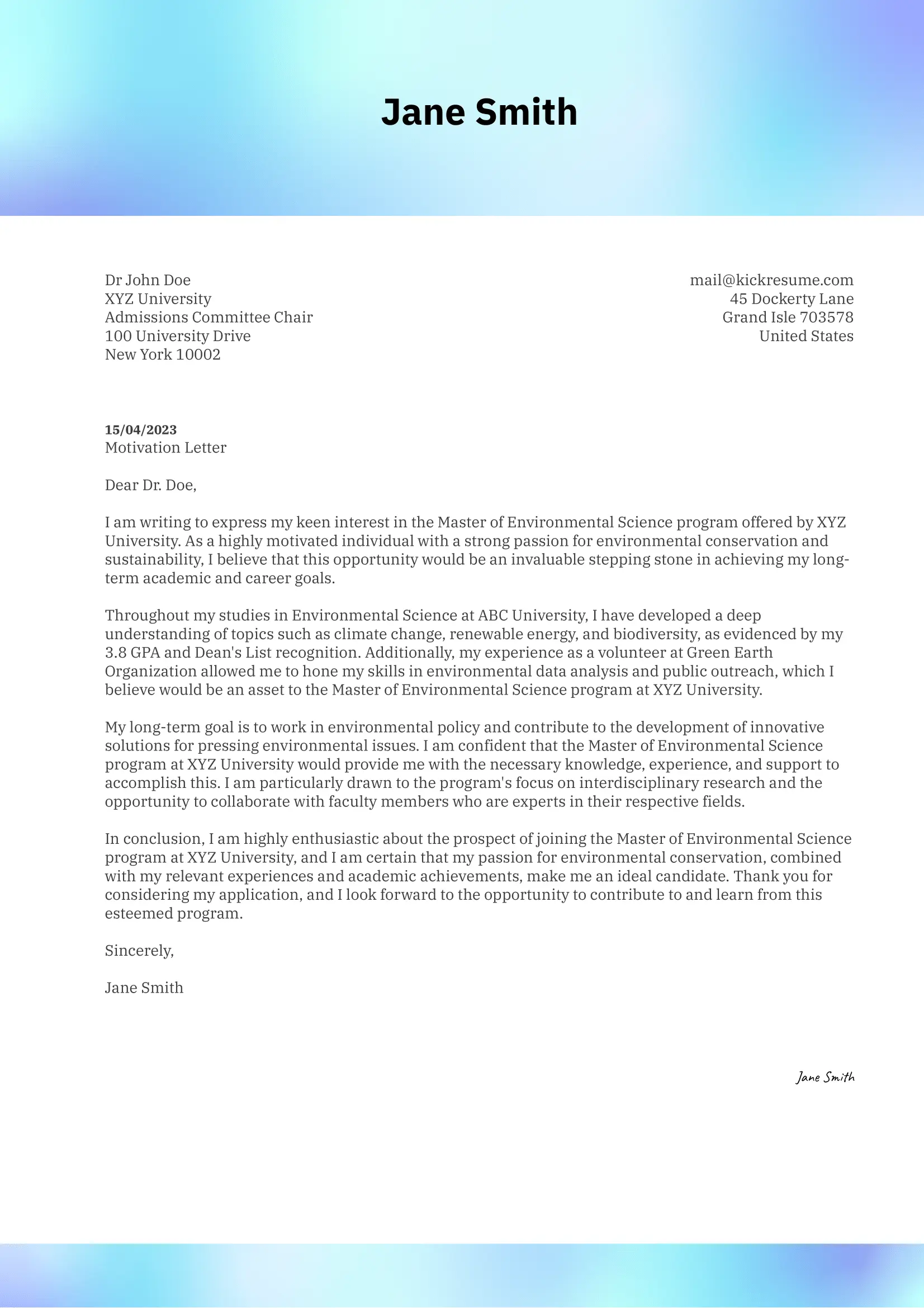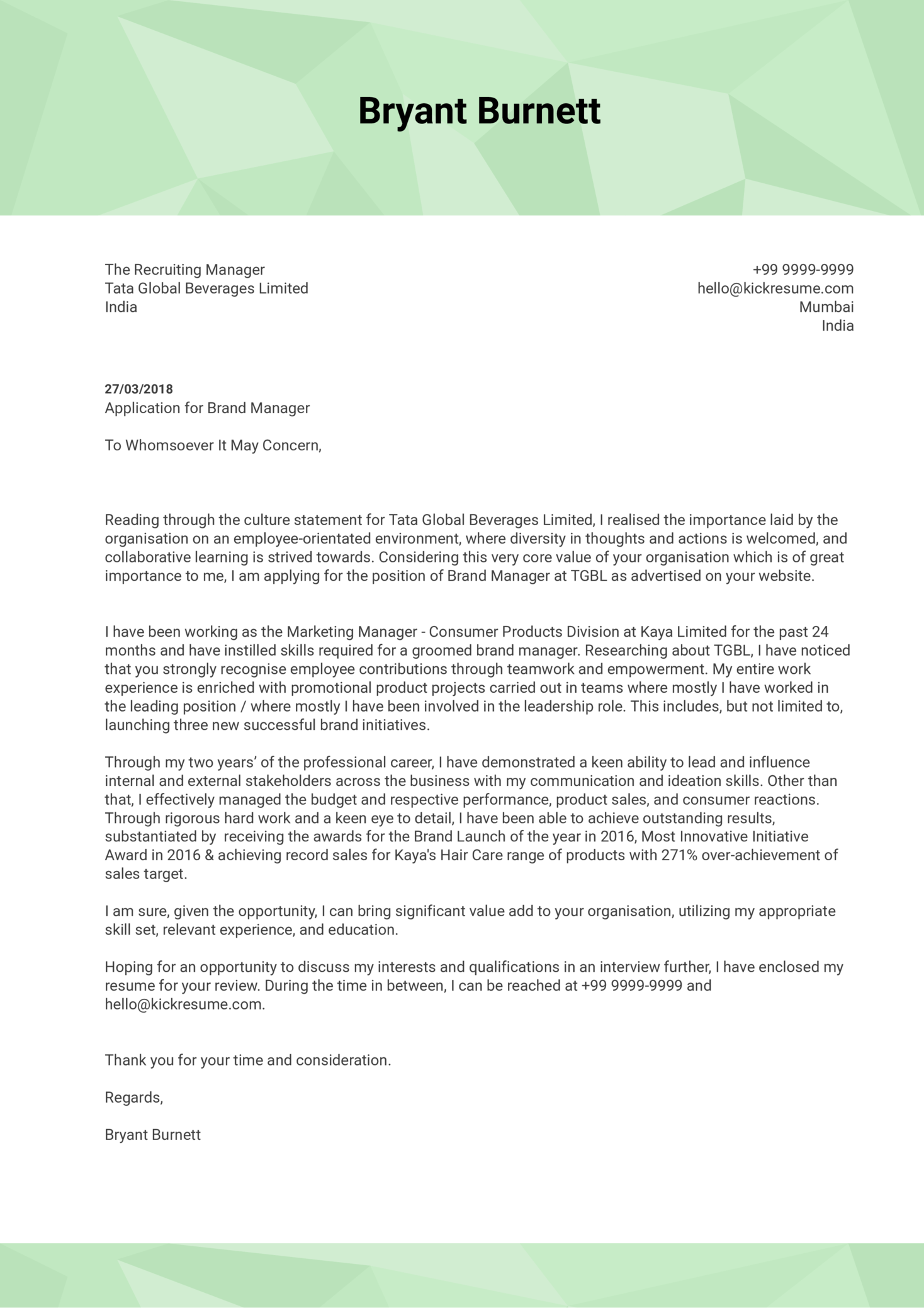If you've ever found yourself scratching your head and wondering about the difference between a motivation letter vs. cover letter, you're not alone.
These two documents, while similar, have distinct uses and contexts that set them apart.
In a nutshell, the main difference between cover letter and a motivational letter lies in the fact that a cover letter is typically used in career settings, while a motivation letter is more common in academic settings.
In this article, we'll dive into the specifics of each document and provide examples to help guide you on when to use which.
Motivation letter vs. cover letter
What's the difference between a cover letter and a motivation letter?
Let's sum it up:
| Document | Cover letter | Motivation Letter |
| Purpose | To accompany and introduce a job application | To express interest in a program or position |
| Target audience | Employers, HR managers | Academic institutions, NGOs, or employers |
| Main focus | Skills and qualifications for a specific job | Personal motivations and aspirations |
| Structure | Formal and structured | Less formal, more personal |
| Content | Job-related experiences and skills | Personal experiences and aspirations |
| Tone | Professional | Personal and passionate |
| Length | Typically one page | One to two pages |
| Customization | Tailored to a specific job and company | Tailored to a specific program or institution |
| Attachments | Resume, portfolio, or other relevant documents | May include academic transcripts, CV, or other support documents |
Now, let's have a closer look at each of these documents, together with an example of both a cover letter and a motivation letter.
What is a cover letter?
A cover letter is a document that serves as your introduction to a potential employer, showcasing your background and explaining why you would be a good fit for the position they're offering.
It should accompany your resume and should complement the information in it.
In essence, it's your chance to present yourself, let your personality shine through, and provide additional details that might not fit within the limited space of your resume.
Even if you lack previous experience in the field, a well-crafted cover letter can help you stand out by highlighting your enthusiasm and positive qualities.
How to write a cover letter
When it comes to writing a cover letter, the structure is just as important as the content. Here's a simple breakdown of the key components to include:
- Opening paragraph: Start with a brief introduction, saying who you are and the position you're applying for. This is your opportunity to grab the reader's attention and encourage them to read on.
- Body paragraphs: Use this section to showcase your relevant skills, experiences, and achievements. Be sure to provide concrete examples and explain how they directly relate to the job you're applying for. This is your chance to demonstrate why you're the ideal candidate for the position and how your background aligns with the company's needs and values.
- Closing paragraphs: In your closing paragraphs, restate your interest in the position and summarize your qualifications. This is also an excellent opportunity to express your enthusiasm and eagerness to contribute to the company's success. Don't forget to thank the reader for considering your application and provide any necessary contact information.
Cover letter example
Now that you have a better understanding of what a cover letter entails and how to write one, let's take a look at an example to help illustrate the key concepts.
What is a motivation letter?
While cover letters are designed for job applications, motivation letters serve a different purpose.
Motivation letter is typically used when applying for academic opportunities such as scholarships, internships, or postgraduate programs, but also when applying for a non-profit organization or voluntary work.
A motivation letter aims to convey your passion for the subject, your personal goals, and how the program or opportunity aligns with those aspirations.
It's an opportunity to showcase your drive, commitment, and enthusiasm for the field, setting you apart from other applicants.
How to write a motivation letter
When crafting a motivation letter, it's essential to convey your genuine interest in the program or opportunity and provide a clear explanation of your motivations.
Here's a simple outline to follow:
- Opening paragraph: Begin with an introduction, stating who you are and expressing your interest in the program or opportunity. This is the perfect chance to capture the reader's curiosity and set the tone for the rest of the letter.
- Body paragraphs: In this section, delve into your motivation for pursuing this opportunity, your long-term goals, and how the program aligns with those objectives. Be specific and provide examples, such as relevant experiences or accomplishments, that demonstrate your commitment to the field.
- Closing paragraphs: Wrap up your motivation letter by reiterating your interest in the program or opportunity and expressing your enthusiasm for the potential it offers. Thank the reader for considering your application and provide your contact information.
Motivation letter example
Now that we've covered the purpose and structure of a motivation letter, let's take a look at an example to help bring these concepts to life.
This sample motivation letter will demonstrate how to effectively introduce yourself, share your motivations and goals, and express your enthusiasm for the academic opportunity:
University Motivation Letter Example

Motivation letter vs. cover letter? Our final piece of advice
Throughout this article, we've explored the key differences between motivation letters and cover letters.
In a nutshell, a cover letter focuses on your qualifications and suitability for a specific job, while a motivation letter expresses your enthusiasm and reasons for pursuing a particular opportunity, often in educational or volunteering contexts.
Furthermore:
- Cover letter typically includes your contact information, addresses the hiring manager, and is tailored to a specific job posting or company.
- Motivation letter is more general, often used for educational or volunteer programs, and emphasizes your passion, personal goals, and reasons for choosing the opportunity.
By understanding these distinctions, you can confidently craft the right document for your specific needs, be it an academic opportunity or a job application.




